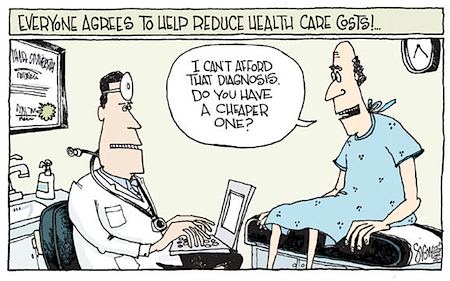New ObamaCare Rule May Be Costly for Seniors
original article written by Net Advisor™
WASHINGTON, DC. The Obama Administration introduced a new rule to control healthcare costs. On the surface this sounds like something that most people might want. But when you actually begin to understand the rule and who is impacted the most, it looks like the costs will burden seniors the most.
“The Obama administration has given the go-ahead for a new cost-control strategy called “reference pricing.” It lets insurers and employers put a dollar limit on what health plans pay for some expensive procedures, such as knee and hip replacements.”
— Source: Yahoo Finance/ AP (PDF)
Depending on the healthcare plan one has, there will be limitations as to how much the insurance company will pay for a procedure. This isn’t an entirely new concept; it’s the revision of the rule that is costly.
The Obama Administration may be trying to set standards about how much an operation will cost, even if the actual costs are more. Consumers will end up paying more out of pocket for medical services, especially surgeries.
“Affordable” Plans Tend to Have Higher Shared Costs
Many of the so called ObamaCare “affordable plans” have high annual deductibles and high co-insurance. Let’s say you have a 70/30 plan with a $6,300 annual deductible for an individual, $12,700 deductible for married, co-inhabiting, or domestic partners.
Now let’s say you need knee surgery, or hip replacement (Arthroplasty – or THA) for example. These are more common procedures for the elderly. The actual costs can vary widely depending on the plan and the hospital.
According to a 2013 study by the Journal of American Medical Association (JAMA) found that THA surgery could cost anywhere between $11,110 to $125,798. That would bring the average cost of $68,454 to replace both hips.
Using the mean average and dividing it in half for one hip would work out to be $34,227. If the plan covers $30,000, one would pay the balance of $4,227 if they had not paid the full annual deductible yet in the year when the procedure occurred.
Here is Where the New Healthcare Rule Can Get Expensive
Under Obama’s new rule, your annual deductible may not even be applied to the procedure. You could also end up paying more money out of pocket for a procedure that the plan is willing to pay.
“If you pick (a hospital)…that charges $40,000, you would owe $10,000 to the hospital plus your regular cost-sharing for the $30,000 that your plan covers. The extra $10,000 is treated like an out-of-network expense, and it doesn’t count toward your plan’s annual limit on out-of-pocket costs.
— Source: Yahoo Finance/ AP (PDF)
The costs that Yahoo/ AP provided above does not state whether this is the entire cost estimate or just the surgeon’s costs. There will be hospital cost, medications, and other costs before and after surgery. We don’t have clarity whether these ancillary costs are applied toward the deductible or under Obama’s new rule.
Either way, what happens here is this new rule results in a person could end up paying thousands of dollars more for healthcare compared to the previous rules – before ObamaCare.
The Obama Administration’s idea of affordability is to attempt to control healthcare costs, by setting what healthcare costs are. In the real world, government has never been successful at price fixing. We eventually will face higher taxes to cover the costs the government is subsidizing, and we will end up paying more for healthcare.
No one is “saving” any money under this new rule. The doctor, hospital and staff will get paid less, and the consumer pays more.
Ask Questions. Get it in Writing.
When looking at healthcare plans, make sure you have intimate knowledge of the plans, what is or is not covered, the exclusions, limitations, and exceptions.
Ask questions. Never assume that what you are told over the phone is correct. Get it in writing. Follow up important phone calls (especially regarding potential surgery or costs you may be responsible for) with a letter to your insurance company summarizing your understanding of the conversation.
Send your letter by certified mail or other proof of tracking (FEDEX, UPS). Add a line at the last paragraph of the letter asking your insurance company to clarify any parts that may be in difference to your understanding of coverage, etc. This can help get the insurance company to respond to your inquiry, and that everyone understands who is paying exactly for what, and what is not covered.
Keep in mind that amendments to healthcare plans can change every year, this means costs can change too.
Read more on our healthcare strategies here.
__________________________________________________________________________
Net Advisor™ is former insurance agent, who was state licensed to carry three lines of insurance including Life, Variable Contracts (annuities), Accident and Health Insurance. This article is for informational, educational purposes only and is not meant to be a recommendation to buy, sell insurance or any other product. Always check with a licensed and experienced insurance agent if you have any questions about insurance in your state. Also verify an agent’s licensing and any disciplinary status with your state insurance regulator. Disclaimer.
Cartoon graphic copyright by its respective owner.
original content copyright © 2014 NetAdvisor.org® All Rights Reserved.
NetAdvisor.org® is a non-profit organization providing public education and analysis primarily on the U.S. financial markets, personal finance and analysis with a transparent look into U.S. public policy. We also perform and report on financial investigations to help protect the public interest. Read More.
__________________________________________________________________________


